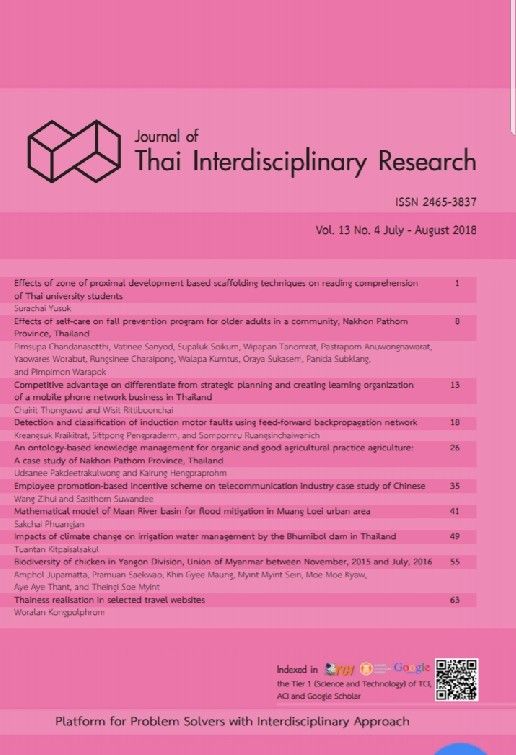Mathematical model of Maan River basin for flood mitigation in Muang Loei urban area
Main Article Content
Abstract
This study involved hydrodynamic model of Maan River basin, and was aimed to (1) survey cross sections of Maan River for geometric data; (2) collect hydraulic data for the model; and 3) develop the hydro-dynamic model with HECRAS program. The model was one-dimensional with unsteady and subcritical flows. The upstream boundary condition locates at Sta. 14+416 km. (Kh.86) in Baan Ta Taan. The downstream boundary condition was located at Maan River mouth, the outlet to Loei River in Baan Kok Muang Chi. The overall reach length was 14.416 km with 64 cross sections, includes 7 bridges, 2 weirs. Hydraulic data of 5 periods, with flood waves in the river, were chosen from the hourly flow data during 2013-2016.
The model was calibrated by comparing RMSE (Root Mean Squared Error) of the calculated stage hydrographs and the observed ones at km. 03+342 station, with the Sep-2016 flow data. By trial and error method, the optimum value of Manning’s n for the model was 0.042.
The model was then verified with 4 flow data sets during flood wave periods. This yielded the average RMSE of 0.156 m. and the average r (correlation coefficient) of 0.893, indicating that the model was good for analyzing flows in lower Maan River.
By running steady flow simulations, it was found that the flood wave takes 3 hrs. to travel from Kh. 86 to the urban area in Baan Hae. It sets time limit for warning people and preparing for the incoming flood. The amount of flow that can cause inundation in Baan Hae and the urban area is 200 cms. It was also found that Baan Hae weir obstructs the flow and worsens the flood.

